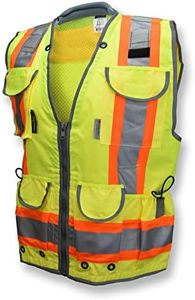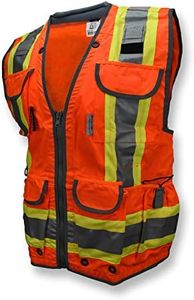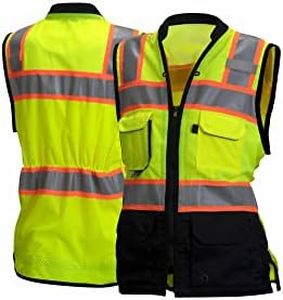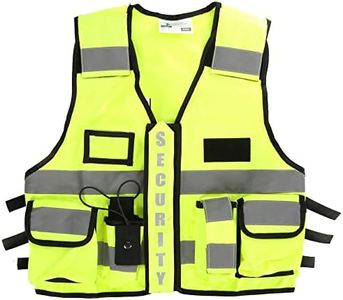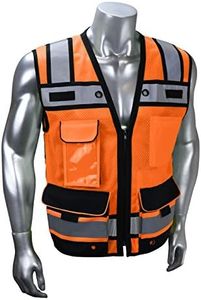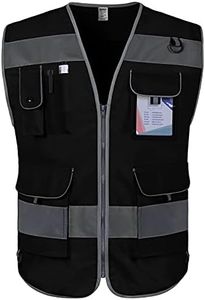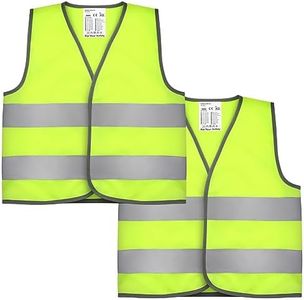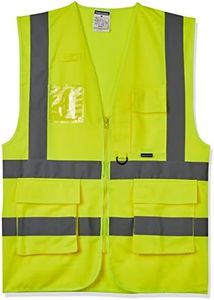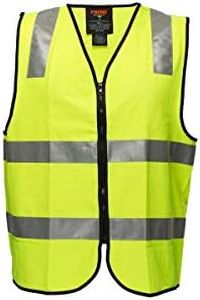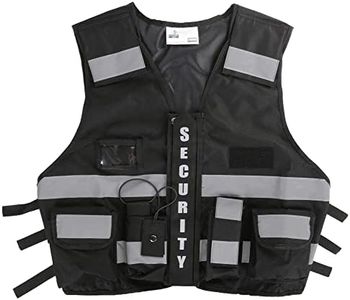We Use CookiesWe use cookies to enhance the security, performance,
functionality and for analytical and promotional activities. By continuing to browse this site you
are agreeing to our privacy policy
10 Best Safety Vests
From leading brands and best sellers available on the web.Buying Guide for the Best Safety Vests
When choosing a safety vest, it's all about visibility and protection. You want something that will ensure you stand out, especially in low-light or high-risk environments. Picking the right safety vest comes down to considering where and how you will use it. The vest should be comfortable enough to wear for long periods, but also effective in making you visible and keeping you safe, whether you're working on a construction site, directing traffic, or cycling at night. Each key specification addresses a different need—by understanding them, you can select the vest that best fits the kind of work or activity you do.MaterialThe material of a safety vest determines how durable and comfortable it will be. Common materials include polyester, mesh, and sometimes cotton blends. Polyester is lightweight, water-resistant, and durable, making it great for outdoor or tough work settings. Mesh materials increase breathability for hot environments or physical activity. If you need lightness and airflow, mesh is best; for longevity in rough conditions, go for sturdy polyester. Consider how much movement and protection you need when deciding which material suits your situation.
Color and ReflectivityHigh-visibility colors like neon yellow or orange, combined with reflective strips, are crucial for safety vests. The brighter and more reflective the vest, the easier it is for others to see you in various lighting conditions. Some vests use more reflective tape for nighttime use, while others depend mainly on bright color for daytime. If you work at night, choose a vest with more extensive reflective material; for daytime visibility, vibrant color may be sufficient. Think about when and where you'll be wearing the vest to guide your choice.
Certification/Class RatingSafety vests are often rated by safety standards, such as ANSI or EN standards, which define how visible the vest should be. These are usually divided into classes�—higher classes provide more high-visibility material and reflectivity. Class 1 is for low-risk environments, Class 2 is for moderate risk, and Class 3 offers the highest visibility for the most hazardous locations. Check the requirements of your job or the risk level of your activity. If regulations apply, you’ll need to match the vest’s class to those standards.
Pockets and FeaturesThe number and type of pockets or added features, such as radio holders or ID windows, can make a vest more useful for certain jobs. If you need to carry tools, pens, or small equipment, look for vests with plenty of secure pockets. Some vests also include loops or D-rings for hanging items. If convenience and organization are important to your daily tasks, prioritize these extra features.
Fit and AdjustabilityA proper fit ensures comfort and effectiveness. Adjustable vests with straps or hook-and-loop closures can fit a variety of body shapes and sizes, allowing you to wear them over different types of clothing. Some vests also come in specific sizes for a closer fit. If you need a vest for use over bulky jackets, choose one with generous adjustability. Comfort over long periods can depend on having the right fit.
